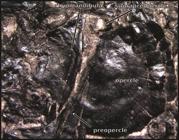ABSTRACT
Fossil gonorynchiform fishes range from the Lower Cretaceous to the early Miocene, and are represented by a few dozen living species. The order is currently divided into two major clades: Gonorynchoidei, which includes the families Gonorynchidae and Kneriidae, and Chanoidei, encompassing a single family, Chanidae, with a single recent species, the Indo-Pacific Chanos chanos, and several fossil taxa. Chanidae includes some poorly known taxa, such as Dastilbe moraesi, described from the Aptian (Lower Cretaceous) of the Areado Formation, Sanfranciscana basin, Brazil. This species is currently considered to be a junior synonym of the type species of its genus, Dastilbe crandalli, from Santana Formation, Aptian, northeastern Brazil. The analysis of abundant D. moraesi specimens revealed several new morphological features, many of which had previously been misinterpreted. Dastilbe moraesi was incorporated into a gonorynchiform character matrix as revised and modified for the Chanidae. We obtained a single most parsimonious tree in which D. moraesi is distinct and phylogenetically apart from D. crandalli. According our analysis, D. moraesi forms a sister pair with Chanos, a clade which is closely related to Tharrhias, all composing the tribe Chanini.
Keywords:
Areado Formation; Fossil fishes; Marizal Formation; Phylogeny; Santana Formation

 Thumbnail
Thumbnail
 Thumbnail
Thumbnail
 Thumbnail
Thumbnail
 Thumbnail
Thumbnail
 Thumbnail
Thumbnail
 Thumbnail
Thumbnail
 Thumbnail
Thumbnail
 Thumbnail
Thumbnail
 Thumbnail
Thumbnail








